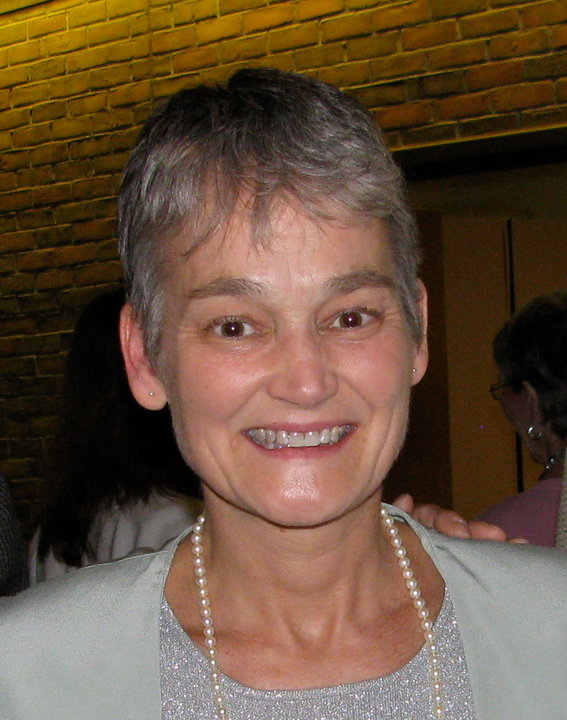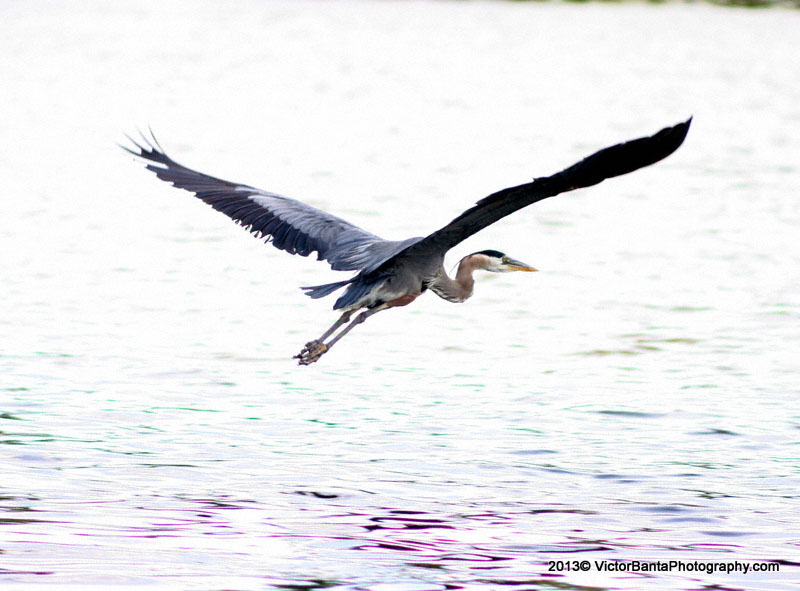The River Along the Lakes
by Pamela Reed Toner, 1999
I first experienced an American summer in a state of culture shock. I came to the United States as a young child, having been born in Japan at the tail end of the ‘50’s. During my first summer here, I remember standing in a country grocery store somewhere near Portage Lake, which rubs elbows with the Huron River as it wanders by on its way from Base Line Lake to Hudson Mills Metropark. A jar of beef jerky sticks sat on a counter next to another jar of pink pickled eggs floating in a cloudy liquid. On the wall behind them, a calendar, bordered at the top by an eagle, pictured a motorboat pulling a muscled man on water skis. Fireworks flashed in the sky behind him.
A pale man’s face with large round American eyes appeared over the counter. I was terrified of unfamiliar Americans who routinely lowered their faces close to mine, staring straight at me, asking questions in their big voices. Japanese people did not stare so, nor speak so loudly.
“Hi-ee,” said the face. “What’s your name?” I stared at the floor, examining a knothole in one of the wood planks.
 Pam Toner
Pam Toner“Pam,” said my mother.
“Payum,” said the man. “Hi-ee Payum.”
The wide vowels and the high volume stunned me. So did the beach. A mosaic of towels lay quilted across the sand. Float toys bobbed and beach balls flew above a continuous cackle of chatter and squeals. Large people screamed and splashed with little clothing and even less decorum. They ate casseroles with chunks of meat and vegetables sauced together and salads with gelatin, marshmallows, and fruit all intermingled. I watched a boy wipe a swatch of a hot dog bun through a puddle of pork and beans and stuff it in his mouth. In Japan, each kind of food had been kept properly on its part of the plate, not mixed around with such sloppy abandon.
Although the beach was noisy, I found comfort in the quiet pulse of the water against the shore. I collected tiny stones and shells that shook gently in my bucket as I walked, and I examined the bits of seaweed that lined the water’s edge. After a few years, better versed in American culture and vested with a younger brother, I enlisted him in a series of dredging projects. We traced out wet canals with our shovels, scooping uphill through the sand. Eventually, a scrawl of waterways was written all over the beach. We finished by shoveling out a final starting point before making trip after trip with our buckets, refilling our rivers with lake water and watching it trickle back to the shoreline.
For a long time the chain of lakes north of Ann Arbor was synonymous with summer, and I knew the Huron River strictly as a fall phenomenon associated with annual canoe trips past the Dexter Cider Mill, where we would pull up on shore for donuts—warm, crispy, and greasy on the outside, and sweet and doughy on the inside—and cider tapped straight from a spigot on a barrel wedged through a hole in the side of the building. You could drink as much as you wanted once you paid a penny for a cup, and we kids would guzzle the cider furiously until we were bloated. The taste itself, however, was mellow and slow.
I finally linked the lakes of the summer with the river of autumn while looking at a couple of old aerial maps. I realized that we could enter the Huron River from Portage and travel northward from lake to lake, Base Line to the Whitewoods to Gallagher to Strawberry. Intending to trace that route, a friend and I paddled our canoe up the river from Portage to Base Line. Remembering the book Paddle to the Sea, we dreamed excitedly about navigating the river backward to its origin in a trip punctuated with our own private adventures. We paddled across the bottom half of Portage Lake to a short canal that runs under the road to the Huron River. After ducking low under the metal bridge, we could sit up again to see the dam on the right and, to the left, the river greeting us on its way from Base Line Lake. The river between Base Line and Portage serves as a “canal” that becomes a busy place on weekends, with constant boat traffic between the lakes and two and from a party store with a dock for mooring boats when stopping for beer and chips. We paddled along, breathing gasoline fumes and rocking from the clashing waves of various wakes. Along the sides of the river, turtles sat on sunny logs, their color barely distinguishable from their perches, staring at the parade of boats.
Once the river widened into Base Line, a brisk wind blew in our faces, and we paddled hard into it. Base Line is a smooth circle of a Lake, more manicured than Portage. A lush collar of green trees enfolds the shore around its entire circumference, creating shady enclaves that are good for fishing. We paddled northeastward across Base Line and then up what we supposed was the river to what we thought was the first of the Whitewood Lakes. After not finding the outlet that we knew should be there on the northeast side, we turned around, tired, and retraced our route back to Portage.
It wasn’t until I was home for a summer from college that I tried the trip again, this time with a boyfriend and a motorboat, enjoying a lazy parenthesis between the end of final exams and the start of a summer job. Remembering the mistake several years before, we hung right out of Base Line and puttered easily and dreamily up the two Whitewood Lakes and on to Gallagher Lake. Gallagher is now lined with a thick ring of homes, but back then we wound through all three of these lakes, passing just a small circle of cottages on one side of the first Whitewood, all the rest grassy and marshy with cattails and only an occasional house.
Next came Strawberry, a civilized lake with pontoon boats moored neatly next to cottages that I remember painted white, red, and green. The river enters Strawberry Lake from the north, sneaking almost imperceptibly under M36 on its way south from Ore Lake, but we didn’t trace the river beyond the road. Instead, we veered northwestward up a canal connecting Strawberry Lake to Zukey Lake, where we stopped for pizza at the Zukey Lake Tavern. The tavern side of Zukey was cluttered with cabins facing every which way, as if someone had accidentally spilled them there along the narrow stretch of land between the dirt road and the shore. The tavern was dark and wood-paneled, with no windows, like an underground burrow. A narrow hallway led back to a main room that had a bar and tables, and another room sat to the side with booths. Televisions were mounted in the corners on both sides of each room so that patrons could watch sporting events from any seat in the place. While we ate, the place grew gradually louder and smokier as a series of softball teams finished their games and dropped in for dinner.
Now I make the trip to Zukey Lake by car to pick up pizza for the kids, driving over from my parents’ house, which they built on Portage Lake a few years ago. Their house has many windows, and nearly all of its rooms open directly to the lake. The screen doors slide and click, slide and click with the comings and goings of grandkids on the weekends. At their house one morning, my kids run circles past me. The two boys, seven and five, are singing the Pokemon theme song. Their two-year old sister trails along, elated, yelling “Peekachoo!” I stand washing breakfast dishes, looking out at the beach. Outside the window, a flock of Canada geese takes off, squawking upward. These days, most people find them a loud and messy nuisance, but when I was young, they were a novelty on the lake. I remember watching a flock in awe with my family one night as they descended to the water in the orange evening sky.
Once the flutter of geese is gone, I notice a silent heron down by the dock. People on the lake know him as Frank, who comes to fish every morning. By many accounts, he has been around for years. Whether he is the same heron or a succession of different birds is unclear. He stands still, staring at the water. Usually I call the kids to come and see, but today I decide to leave him alone. He struts down the dock in slow, studied angles. Frame by frame, he lifts a leg, stops, places a foot, stops, lifts the other leg, stops. He turns, suddenly serious, staring at a large rock by the shore. He freezes. His beak is poised, pencil-like, above the silvery surface of the water.
The kids charge through again. One of them yells, “Gyardos—Go!” My toddler follows with a pink bottle in her hand, trailing a white line of sun block down the hallway toward the kitchen. I clean it up, grab towels from the dryer, deal out club crackers, and put on my sunglasses. I glance out the window.
Frank still stands by the rock, framed by the branches of a willow tree. Soon, the four of us will pour out the door, loud and clumsy, and he will spread his wings and rise, just in time but in no particular hurry, slowly folding his legs as he goes. For just this second, though, he stays, suspended there, beak pointed at the same single spot, the water lapping gently, barely erasing the tips of his claws.

Photograph copyright© 2013 by Victor Banta Photography.